If you happen to be in Paris this coming weekend — the 21st & 22nd September — you’re in for a treat, because you’ll have the chance to explore a Paris that is usually tucked away behind closed carriage doors. The European Heritage Days see a variety of monuments and government buildings open their doors to the public, but in Paris the ‘Journées du Patrimoine’ are particularly exciting, in this city so rich and layered in history. Read on for some of the highlights, or find the full programme here.
The Hôtel de Beauvais

Dating back to the 1650s, this old hôtel particulier (private townhouse) is a beautiful example of Parisian Baroque architecture. Sadly, little of its original interiors remains (it boasted a bathroom, a rarity at the time, chapels, a suspended terrace garden, and all sorts of bijou rooms fitted into the nooks of this irregularly shaped plot), but you can still wander into the ingenious circular vestibule (which ensured cover when guests were alighting from their carriages) and go up the old escalier d’honneur (main stairway), which retains much of its original decorative detailing.

Look for the ram’s heads; they’re a reference to the original owner, Catherine-Henriette Bellier (a ram is un bélier in French). The story goes that Bellier, a middle-aged and rather plain lady-in-waiting to Queen Anne, could afford to commission the sumptuous townhouse after special services rendered to the court — namely, relieving a young King Louis XIV of his virginity. The stairs once led to grand receptions rooms on the first floor, which were the scene of many glamorous parties. The building has had many lives since, including as the Bavarian Embassy, when it was home for a while to a seven-year-old Wolfgang Amadeus Mozart, in town in 1763 on his first European tour. It’s now Paris’s administrative appeals court. If you go, make sure to also find the vaulted basement, the storeroom of the thirteenth-century Gothic townhouse originally on this land. It’s yet another sign of the multi-layered history of this city.
The Nave of the Grand Palais

This Belle Époque exhibition hall — built for the 1900 World Fair — is now famously the scene of Chanel’s outlandishly wonderful fashion shows (where the space has been transformed into everything from a French beach to a lush forest to a space station). Le Nef is open infrequently for various shows and expos, so this weekend is a great opportunity to explore this fabulous Art Nouveau creation, which from the inside seems to be some sort of fantastical hothouse for giant exotic flowers and insects. It’s open later this Saturday, until 9.30pm, specifically so that you can capture images of this magnificent glasshouse illuminated by the golden rays of the setting sun.
The Rooms of the Palais-Royal
Since its original incarnation — Cardinal Richelieu began work on his city palace in 1634 — the Palais-Royal has been re-imagined and renovated many times. It is no longer a palace, of course; as with most royal and aristocratic buildings, this is now a government property, housing the Ministry of Culture, Council of State and Constitutional Council. While you can wander around the lovely Palais-Royal gardens at any time of the year, the interiors are usually locked away from prying public eyes, so this weekend is a perfect opportunity to discover some of the old palace’s inner extravagance.
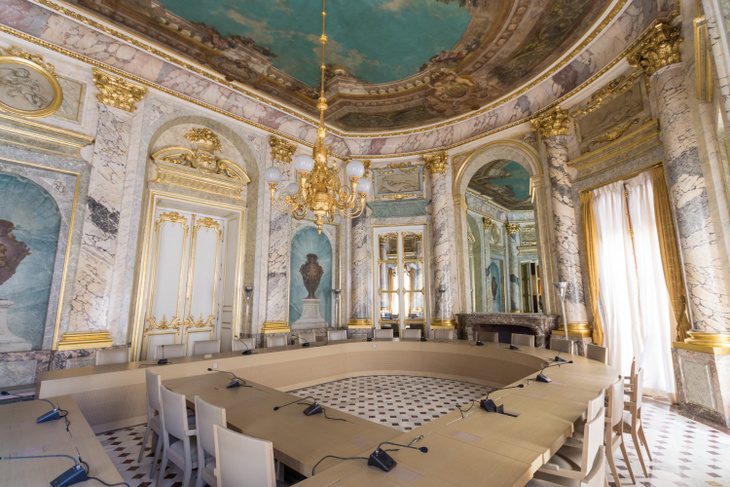
Do a tour of the various rooms, and make sure to keep a lookout for the Conseil d’État’s Salle du Tribunal des Conflits (pictured) — this oval-shaped salon, all a-glamour in marble, gold and trompe-l’oeil, is one of the oldest rooms, having been originally designed in the 1750s as the Duchesse d’Orléans’ dining room.
The Hôtel de Ville de Paris

City Hall is another landmark Parisian building that is usually near impossible to visit as an individual. But this weekend you’ll have the chance to stroll freely through many of its rooms, which are as splendid as the fairytale façade suggests. The building is actually a remake — a late-nineteenth-century replacement of the sixteenth-century town hall that was destroyed in the communard uprising of 1871. Its interiors are neo-Renaissance in style, befitting the heritage.
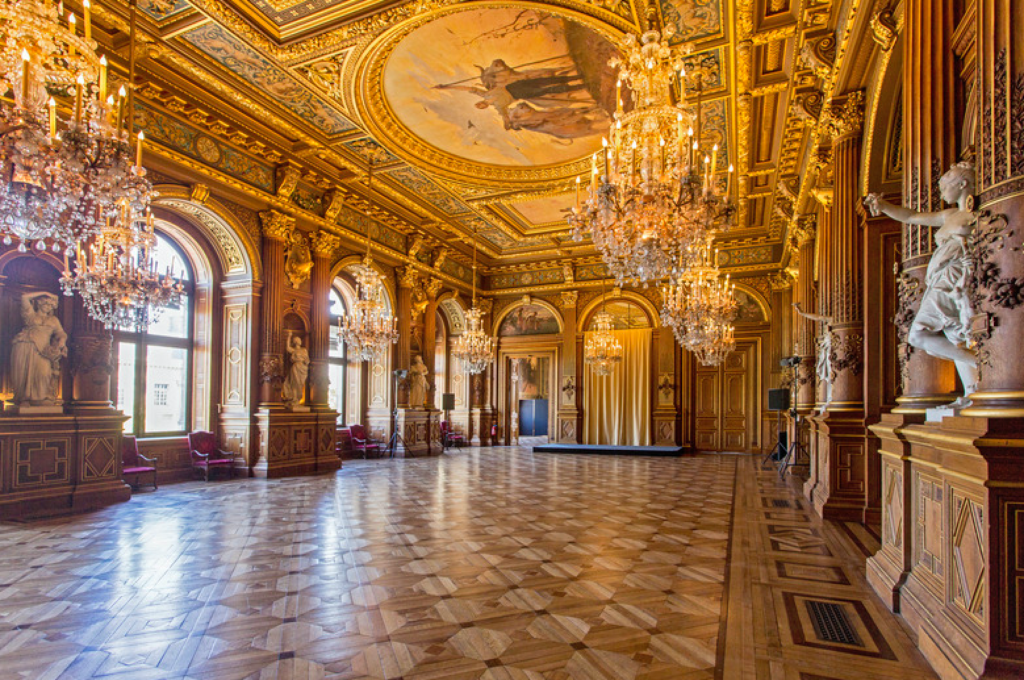
On this tour, you’ll get to see the gilded reception room (pictured), the council chamber, the library and the mayor’s office, among other spaces. Also on show: various workshops, which will share the secrets of Parisian artisanal style, from flower arranging to tapestry weaving to stone carving.
The Institut de France

The Institute is one of the city’s most awe-inspiring addresses, partly due to its imposing Baroque-style architecture, but also because it’s the home of the Académie Francaise, the legendary long-time custodians of the French language. You can visit here on a weekday, but only for access to the Biblithèque Mazarine, a glorious seventeenth-century library complete with soaring shelves of leather-bound books and shiny, squeaky parquetry floorboards.
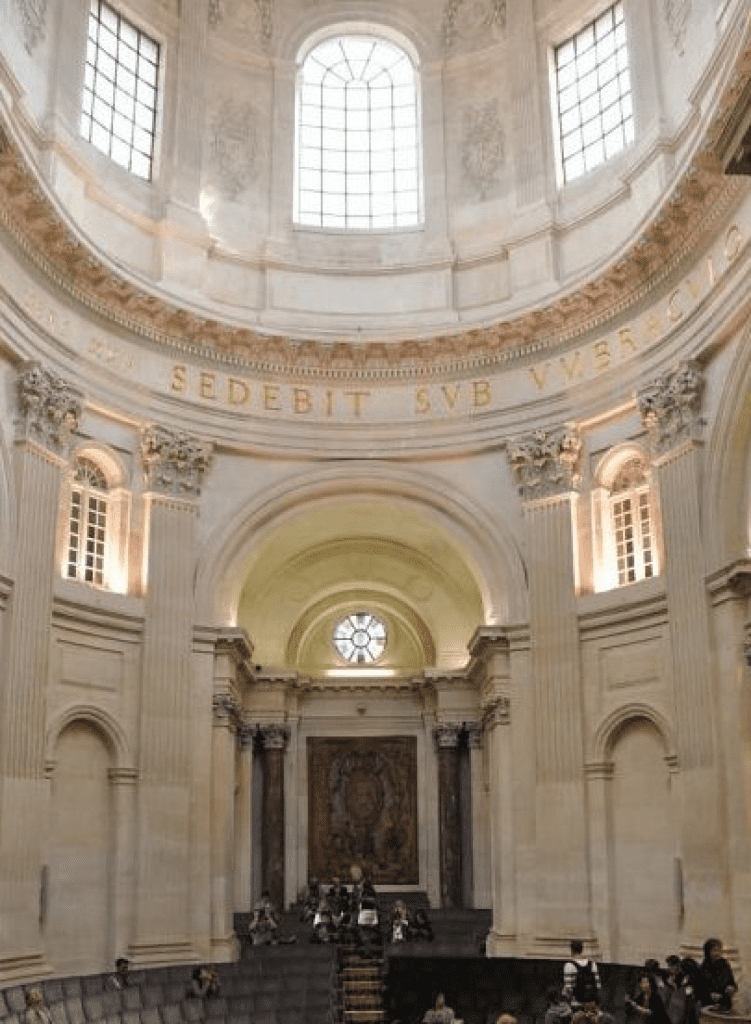
This weekend, you’ll not only be able to swoon over the library and various other historic rooms, but you’ll even be able to ascend to the pinnacle that is la Coupole (pictured) — the dome-topped space where the fabled académiciens meet to (sometimes heatedly) debate various tounge-twisting linguistic issues, such as the anglicisation of French and the correct gender for new words.
The Salle Labrouste
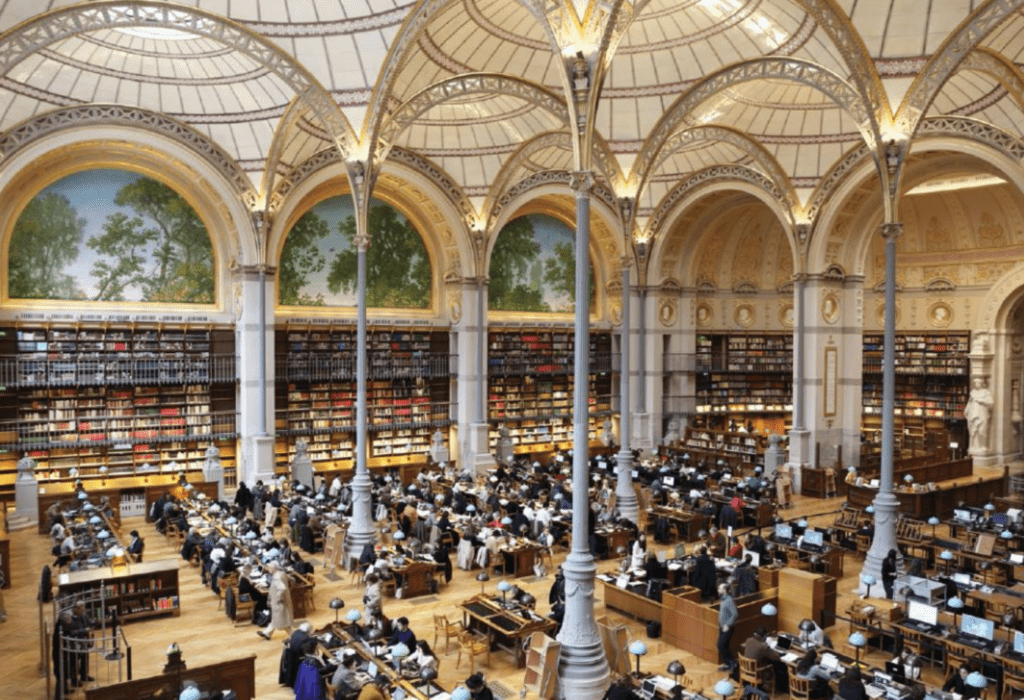
If you’re a library lover, you should also make your way to the Richelieu-Louvois site of Bibliothèque Nationale de France. Non-members can usually only stand at the doorway and gaze in stunned admiration of this space, which seems to have been designed from as dream. But this weekend you’ll be able to enjoy a 360-degree viewing of the soaring ceiling, a cluster of light and lacy domes delicately balanced on long, slender columns, as well as better appreciate the whimsical detailing: the golden medallions, the monumental caryatids and the trompe-l’oeil paintings of window-framed trees.
The Palais du Luxembourg and the Petit Luxembourg
You might have discovered most of the nooks and crannies of the Jardin du Luxembourg yet always stared yearningly at Marie de Medici’s old home, now the Upper House of the French Parliament and, as such, out of bounds to snoopers. So this weekend is your chance to finally see what’s inside.

Most of the former queen’s vision is long gone, but much of the interior, reworked in the first half of the nineteenth century, is stunning nevertheless — the glossy library that was painted by Delacroix, no less, and the Salle des Conférences (pictured), an extravaganza of red and gold that set the tone for the opulent Second Empire era.
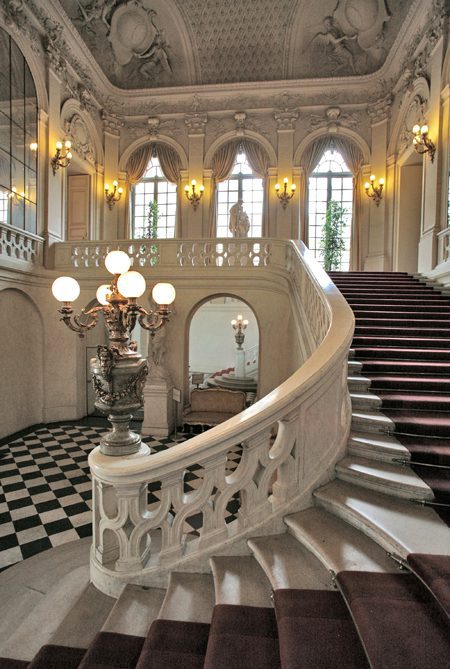
The weekend’s free tour also includes a visit to the neighbouring Petit Luxembourg, a townhouse that can trace its story back to 1550. Again, not much from then remains, but you can see remnants of a convent Marie installed here in 1622: the cloister, now a Winter Garden, and the Queen’s Chapel. You’ll also be able to admire the pretty early-seventeenth-century rooms of one of France’s most lauded Rococo designers, Gabriel Germain Boffrand, along with his grand swoop of a staircase (pictured), beautifully and rendered in classic stone.
The École des Beaux-Arts
There are all sorts of architectural delights to be found across the two-hectare site of Paris’s prestigious school of fine arts. While you’re welcome to roam around some of the complex all year round, this weekend’s guided tours will grant you access to areas usually limited to students and staff.

Particularly exciting will be a glimpse into the Chapelle des Petits Augustins (pictured), the church within the convent established by Queen Marguerite de Valois (a.k.a ‘La Reine Margot’) when she lived on a swathe of the Left Bank in the early seventeenth century. After the revolution, some of the old convent buildings became home to the Musée des Monuments Français, which rescued various treasures from vandalised châteaux and churches; some remain, such as a façade from the Château d’Anet, the mid-sixteenth-century home of royal mistress Diane de Poitiers.

In this time-travelling trip, you’ll also come to appreciate how the land developed into an arts school from 1816, by exploring its celebrated Palais des Études with its elegant glass-covered courtyard (pictured), and the glamorous Ampithéatre d’Honneur. One-hour tours begin at 10.00am, 11.30am, 1pm and 2.30pm.


Wow! Don’t I wish I was going to be in Paris! I’ve just started taking a class in French Traditions and I’m sure they will enjoy this. Thanks.
Hi Lisa. You’re very welcome! Hopefully you can get to Paris one Heritage weekend in the next few years.